Amsterdam is famous for its picturesque canals, which are a UNESCO World Heritage Site and a symbol of the city’s charm. Amsterdam, the capital city of the Netherlands, is a vibrant and picturesque destination that attracts tourists from all around the world. Known for its charming canals, historic architecture, and liberal culture, Amsterdam offers a unique and unforgettable experience. Visitors can explore world-renowned museums such as the Rijksmuseum and Van Gogh Museum, stroll through the colorful streets of Jordaan, and take in the scenic beauty of the city’s waterways. Amsterdam’s diverse dining scene, lively nightlife, and iconic landmarks like the Anne Frank House make it a must-visit destination for travelers seeking a mix of culture, history, and contemporary charm. Here are some of Amsterdam’s most beautiful canals You Should See:
Amsterdam
1. Prinsengracht
Prinsengracht is one of the main canals in Amsterdam and is known for its elegant houses, historic buildings, and tree-lined streets. It is the longest canal in the city and offers stunning views and picturesque bridges.

Prinsengracht, which translates to “Prince’s Canal,” is one of the four main canals that form the iconic Canal Ring of Amsterdam. It stretches over 3.2 kilometers (2 miles) and runs parallel to the other major canals, Herengracht and Keizersgracht.
What makes Prinsengracht particularly captivating is its elegant canal houses, picturesque bridges, and the enchanting ambiance that surrounds it. As you stroll along its banks or take a boat ride, you’ll be greeted by a stunning architectural panorama. The canal houses are characterized by their narrow and tall facades, reflecting the city’s history of maximizing limited space.
One of the notable landmarks along Prinsengracht is the Anne Frank House, located at number 263. This museum is dedicated to the Jewish diarist Anne Frank, who hid with her family during World War II. It offers a poignant and powerful glimpse into the life of Anne Frank and the experience of Jews in Amsterdam during the war.
The canal itself is lined with beautiful trees, which provide a touch of greenery and shade along its banks. These trees, combined with the reflections of the canal houses in the water, create a serene and romantic atmosphere that is truly captivating.
Prinsengracht is also known for its numerous bridges that span the canal, each with its own unique charm. The most famous of these is the Magere Brug, or Skinny Bridge, located near the Amstel River. This iconic bridge is a popular spot for photographs, especially at night when it is beautifully illuminated.
Throughout the year, Prinsengracht plays host to various events and festivals. One of the most famous is the Prinsengracht Concert, an annual classical music concert held on a pontoon in front of the Pulitzer Hotel. The concert attracts thousands of people who gather along the canal banks to enjoy the enchanting melodies and the magical setting.
Whether you choose to explore Prinsengracht on foot, by bike, or by boat, you will undoubtedly be captivated by its beauty and charm. The canal perfectly encapsulates the essence of Amsterdam, combining history, architecture, and natural beauty into a truly enchanting experience.
Amsterdam
2. Keizersgracht
Keizersgracht, meaning “Emperor’s Canal,” is another beautiful canal in Amsterdam. It features a mix of grand mansions, merchant houses, and beautiful gardens. The canal is lined with trees and offers a tranquil atmosphere.
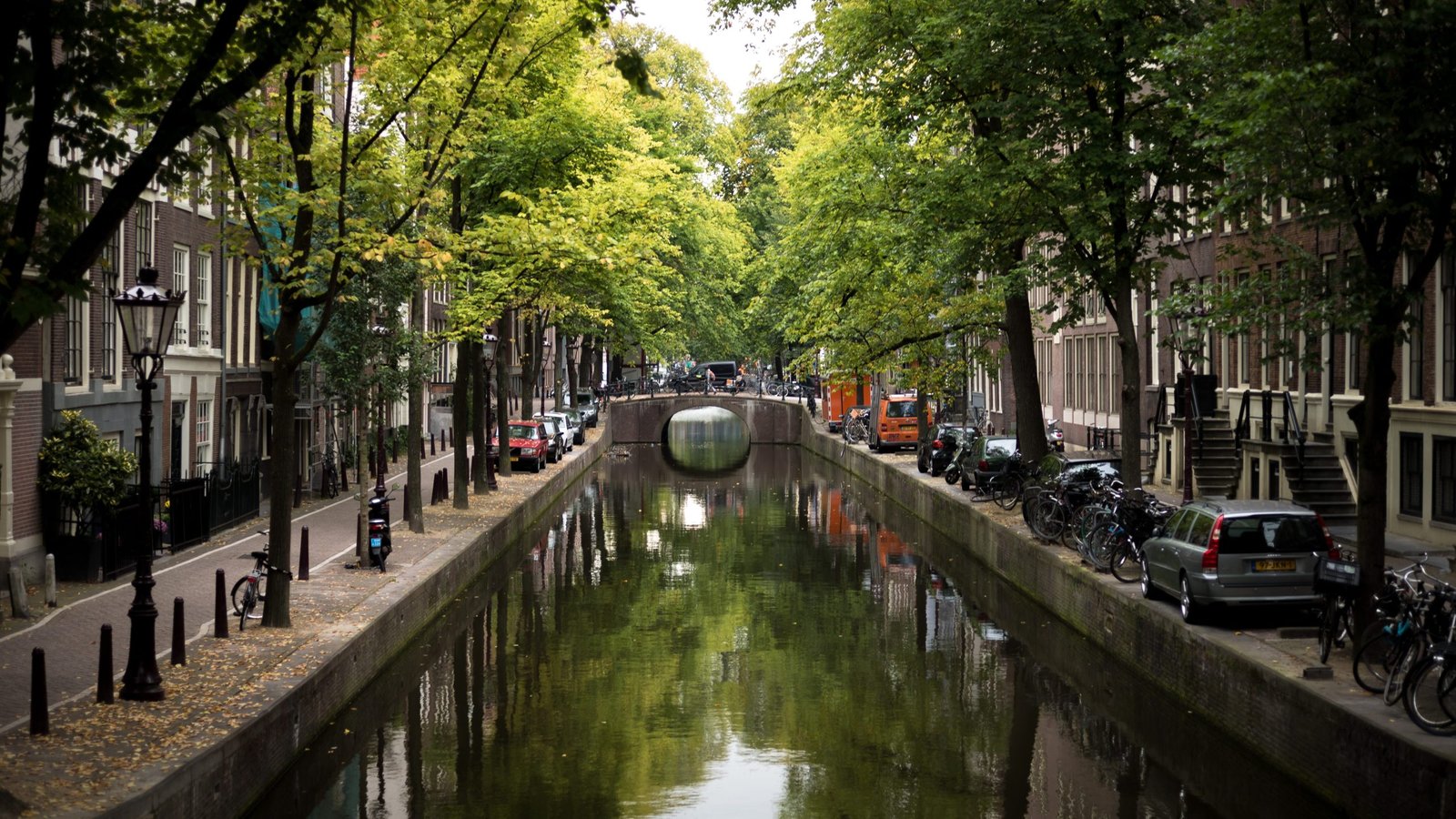
Keizersgracht, meaning “Emperor’s Canal,” is the second of the main canals in Amsterdam, alongside Herengracht and Prinsengracht. It was named in honor of Emperor Maximilian of Austria, who ruled during the 17th century when the canal was constructed. Keizersgracht is known for its elegance and grandeur, making it a symbol of Amsterdam’s affluent past.
One of the remarkable features of Keizersgracht is its width. It is the widest of the main canals, allowing for expansive views of the surrounding buildings. This width was intentional, as it was designed to accommodate the larger and more opulent mansions of wealthy merchants and aristocrats during the Dutch Golden Age.
The canal is lined with a stunning collection of 17th-century canal houses, which showcase beautiful architectural styles, including Dutch Renaissance, Classicist, and Baroque designs. These houses are characterized by their tall and narrow facades, elaborate gables, ornate decorations, and large windows. Many of these buildings have been meticulously preserved and restored, adding to the canal’s charm and historical significance.
Walking along Keizersgracht, you’ll encounter numerous picturesque bridges that connect the two sides of the canal. These bridges offer excellent vantage points to admire the canal’s beauty and capture stunning photographs. Each bridge has its own unique design, adding to the visual diversity of the area.
Today, many of the canal houses along Keizersgracht have been repurposed as museums, galleries, offices, or upscale residences. Some notable sites along the canal include the Anne Frank House, which provides a poignant glimpse into the life of Anne Frank during World War II, and the Museum Van Loon, a beautifully preserved 17th-century canal house that offers insights into the lives of Amsterdam’s wealthy elite.
Whether you’re strolling along the canal’s banks, taking a boat tour, or simply admiring the view from one of the cozy cafes or restaurants that line the canal, Keizersgracht offers a captivating blend of architectural beauty, historical significance, and a sense of Amsterdam’s rich heritage.
3. Herengracht
Herengracht, or “Gentlemen’s Canal,” is one of the most prestigious canals in Amsterdam. It is characterized by its stately canal houses and elegant facades. Walking along Herengracht provides a glimpse into the city’s rich history and architectural beauty.
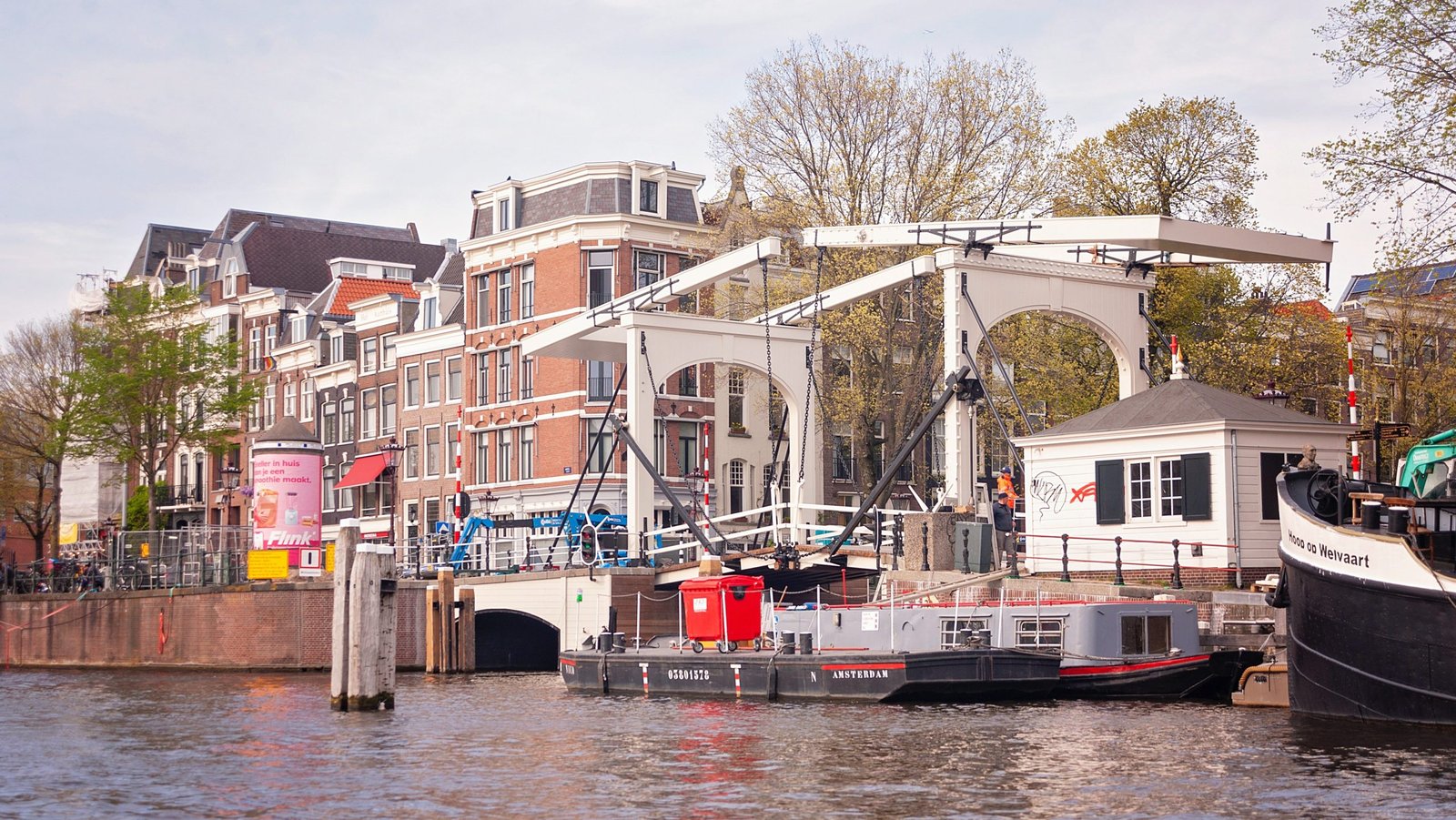
Herengracht, meaning “Gentlemen’s Canal,” is an iconic canal that exudes elegance and grandeur. It is located in the heart of Amsterdam and is often considered the most prestigious of the city’s canals. Herengracht was constructed during the Dutch Golden Age in the 17th century and is part of the UNESCO World Heritage Site known as the “Seventeenth-Century Canal Ring Area of Amsterdam.”
What sets Herengracht apart is its magnificent canal houses, which showcase the wealth and prosperity of Amsterdam’s elite during the Golden Age. These houses were built by wealthy merchants and were designed to impress. The facades of these canal houses are characterized by intricate architectural details, including ornate gables, grand entrances, and beautifully crafted windows.
As you stroll along Herengracht, you’ll be captivated by the architectural diversity of the canal houses. Each house tells a story of its own, reflecting different architectural styles and influences. Some houses feature classical designs with symmetrical facades, while others exhibit the unique Dutch Renaissance style, characterized by stepped gables and ornamental decorations.
The gardens that lie behind the canal houses are hidden gems and add to the charm of Herengracht. These private oases offer tranquility amidst the bustling city, with beautifully manicured lawns, vibrant flower beds, and even small ponds or fountains. Some of these gardens are open to the public during special events, providing a rare opportunity to experience the splendor hidden behind the facades.
Herengracht is also known for its houseboats, which line the canal and add a distinct character to the area. These charming floating homes often have colorful facades and unique designs, blending harmoniously with the surrounding architecture. Some houseboats have been converted into cozy cafes, art galleries, or bed and breakfast establishments, offering visitors a unique experience on the water.
The bridges that span Herengracht are another notable feature. These picturesque bridges, often adorned with flowers and decorative ironwork, provide stunning views of the canal and its surroundings. They serve as connections between the canal houses and offer delightful photo opportunities.
Exploring Herengracht is a captivating journey through time. As you walk along the canal, you can imagine the historical significance of this place and appreciate the legacy of Amsterdam’s prosperous past. The combination of elegant canal houses, enchanting gardens, houseboats, and charming bridges creates a truly enchanting atmosphere that will leave a lasting impression on visitors.
Visiting Herengracht during different times of the day offers unique experiences. Whether it’s the soft glow of the morning light, the vibrant colors of the canal houses under the afternoon sun, or the romantic reflections in the evening, each moment presents a new perspective on the beauty and allure of Herengracht.
Overall, Herengracht is a testament to Amsterdam’s rich history, architectural splendor, and timeless beauty. It remains a beloved destination for locals and tourists alike, showcasing the city’s remarkable heritage and its ongoing connection with its canals.
Amsterdam
4. Singel
Singel is the oldest canal in Amsterdam and used to serve as a moat around the city. It offers a more intimate and quieter atmosphere compared to the larger canals. It is particularly known for its charming houseboats and floating flower market.
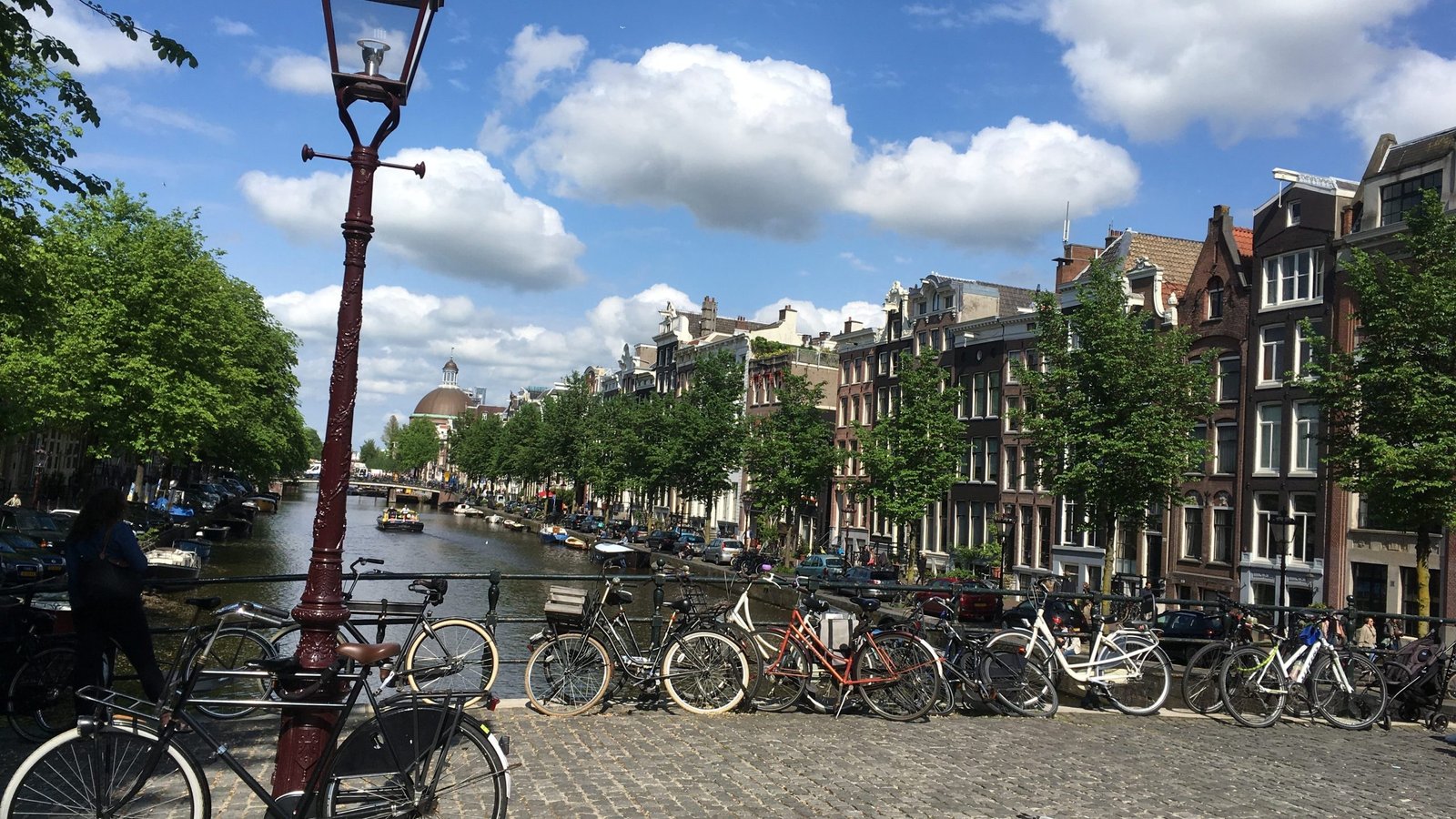
Originally serving as a moat to defend the city during medieval times, Singel is now a serene waterway that winds through the heart of Amsterdam.
One of the highlights of Singel is the Bloemenmarkt, the famous floating flower market. Located on the Singel between Muntplein and Koningsplein, this colorful market is a feast for the senses. Here, you can find a wide variety of flowers, bulbs, and seeds, including the iconic Dutch tulips. Strolling along the market, you’ll be captivated by the vibrant colors and intoxicating scents that fill the air.
Singel is also lined with beautiful historic buildings and charming canal houses. As you walk along its banks, you’ll pass by elegant facades adorned with ornate gables and intricate architectural details. Many of these houses have fascinating stories to tell, and some have been converted into boutique hotels, restaurants, or museums.
The canal is spanned by several picturesque bridges, each offering a unique vantage point to admire the surroundings. One notable bridge is the Torensluis, which is the widest bridge in Amsterdam. It is adorned with ornate ironwork and statues, creating a striking visual landmark.
Another highlight of Singel is its houseboats. These unique floating homes, adorned with potted plants and colorful facades, add to the charm of the canal. Some houseboats are even converted into cozy cafes or bed and breakfasts, allowing visitors to experience the canal life firsthand.
Whether you choose to take a leisurely boat cruise along the Singel or simply explore its banks on foot, you’ll be enchanted by the tranquil atmosphere and beauty of this historic canal. Singel offers a glimpse into Amsterdam’s past while providing a serene escape from the bustling city streets.
5. Brouwersgracht
Brouwersgracht is a picturesque canal located in the Jordaan neighborhood. It is often regarded as one of the most beautiful canals in Amsterdam due to its quaint houses, old warehouses, and charming bridges.
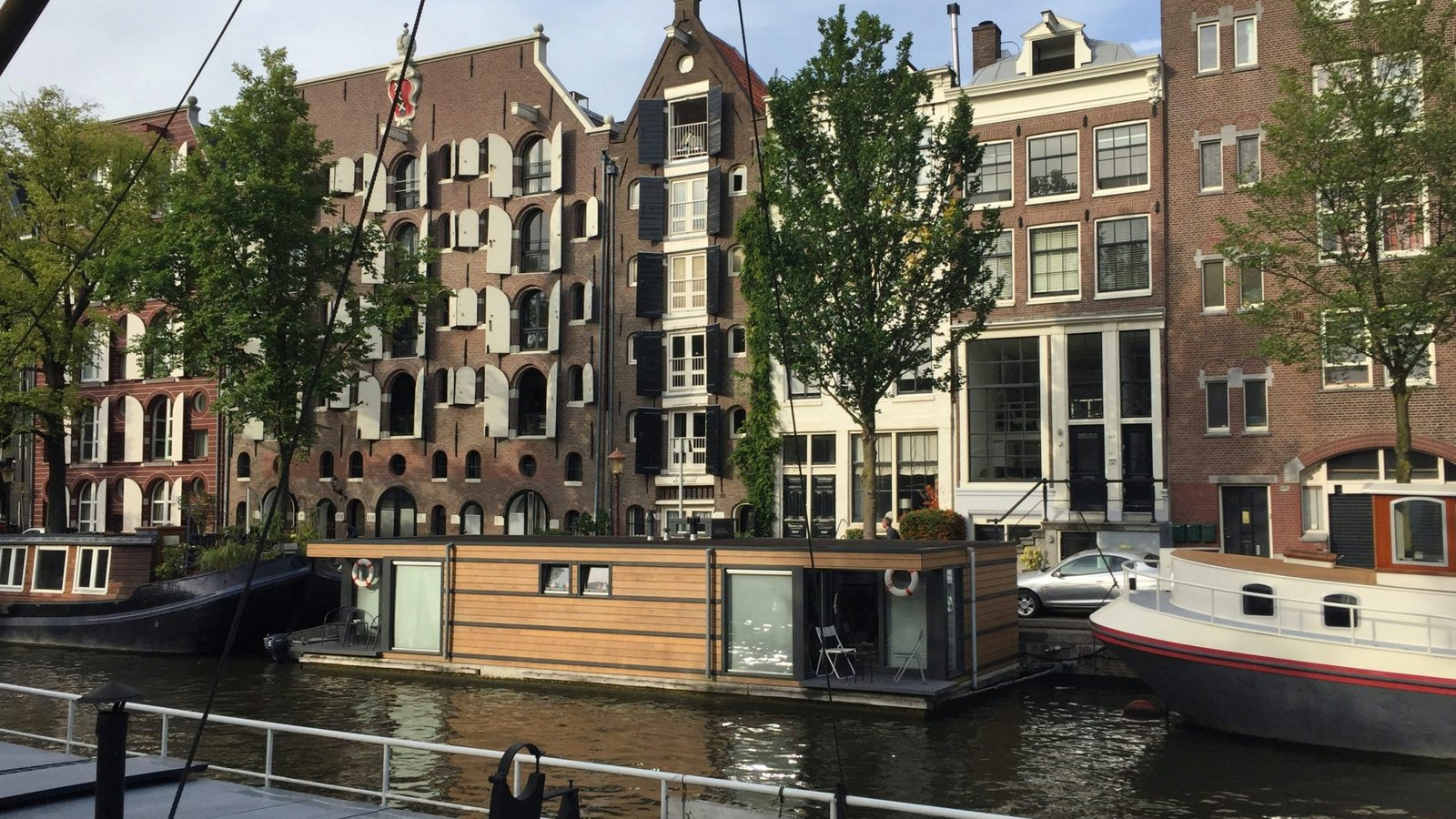
Brouwersgracht is a picturesque canal located in the Jordaan neighborhood of Amsterdam. It is often regarded as one of the most enchanting and idyllic canals in the city. The name “Brouwersgracht” translates to “Brewers’ Canal,” as it was historically associated with the brewing industry that thrived in this area.
What sets Brouwersgracht apart is its intimate and tranquil atmosphere. Unlike some of the larger and busier canals, Brouwersgracht exudes a peaceful ambiance that makes it a favorite spot for locals and visitors seeking a quieter and more laid-back experience.
As you stroll along the canal’s banks, you’ll be greeted by a charming sight of well-preserved 17th-century canal houses, each displaying unique architectural details and colorful facades. The houses on Brouwersgracht showcase a variety of architectural styles, from traditional Dutch Renaissance to classic gable designs, reflecting the historical heritage of the city.
The canal is also home to a delightful mix of houseboats, some of which are adorned with vibrant flower gardens and artistic decorations. These houseboats add a touch of whimsy and character to the canal, creating a picturesque scene that is often captured in photographs and postcards.
Brouwersgracht is spanned by several graceful bridges, each offering a different vantage point to admire the canal’s beauty. Crossing these bridges provides stunning views of the canal, its surrounding houses, and the tranquil waters reflecting the sky and nearby trees.
One of the notable features of Brouwersgracht is its connection to nearby Noordermarkt, a charming square that hosts a popular farmers’ market on Saturdays and an antique market on Mondays. The market adds vibrancy to the area, and the square itself is surrounded by quaint cafes and local shops, making it an ideal place to take a break and soak in the atmosphere.
Whether you choose to explore Brouwersgracht by foot, bicycle, or boat, you’ll find yourself immersed in a captivating and serene setting. It’s a place where time seems to slow down, allowing you to appreciate the beauty of Amsterdam’s canals and the rich history that permeates the city.
Brouwersgracht embodies the quintessential charm of Amsterdam’s canals, offering a delightful escape from the bustling city while still showcasing the architectural splendor and cultural heritage that make this city so enchanting.
6. Prinsengracht / Reguliersgracht
The intersection of Prinsengracht and Reguliersgracht forms a captivating scene known as the “Seven Bridges” (De Zeven Bruggen). It is a popular spot for photographers and offers a unique view of several arched bridges spanning the canals.
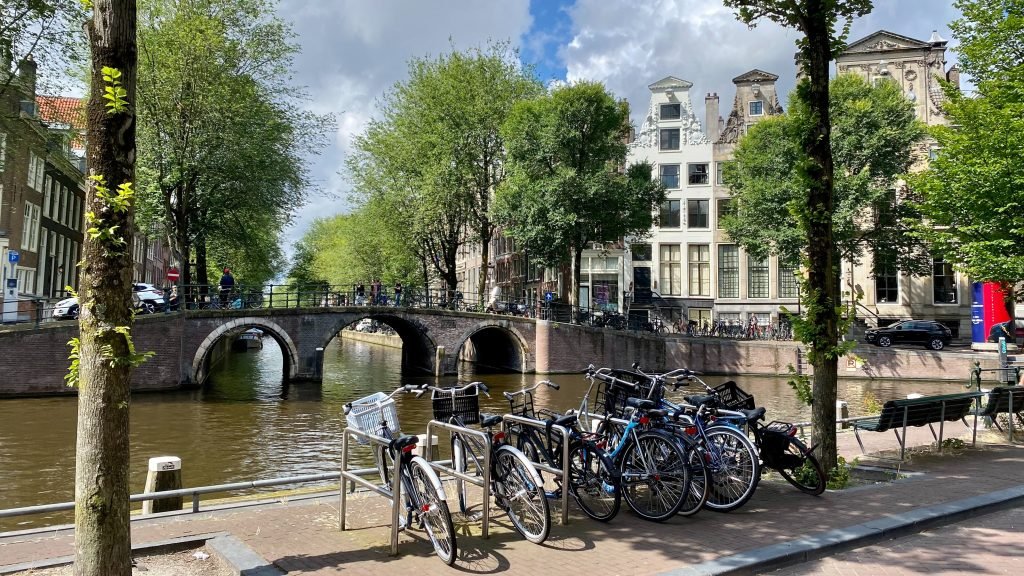
Reguliersgracht is often referred to as the “most photogenic canal” in Amsterdam. It is famous for its iconic seven bridges that span across its width, creating a picturesque scene that is often captured in photographs and postcards. The bridges are beautifully arched and add a touch of romance and charm to the canal.
It is lined with elegant canal houses that date back to the 17th and 18th centuries. These houses showcase a variety of architectural styles, including Dutch Renaissance and Classicism, with their ornate gables and decorative facades. The combination of the well-preserved buildings, the tranquil canal waters, and the charming bridges make Reguliersgracht a true gem in the Amsterdam canal system.
Visitors can take a leisurely stroll along the canal’s banks, admiring the stunning views and soaking in the ambiance of the surrounding area. Many people also choose to explore the canal by boat, either by taking a guided tour or renting a small electric boat to navigate the waters themselves. This allows for an up-close experience of the canal’s beauty and a chance to appreciate the unique perspective it offers.
Reguliersgracht is located in the heart of Amsterdam’s historic canal belt, which is a UNESCO World Heritage Site. Its central location means that it is easily accessible and is often included in walking or cycling routes through the city. Whether you visit during the day or at night when the canal is illuminated, Reguliersgracht is sure to captivate you with its beauty and leave you with lasting memories of Amsterdam’s enchanting canalscape.
7. Leliegracht
Leliegracht is a quiet and scenic canal located near the popular Anne Frank House. It features elegant houses, picturesque canal-side gardens, and cozy cafes. Leliegracht offers a more serene and residential feel compared to some of the busier canals.
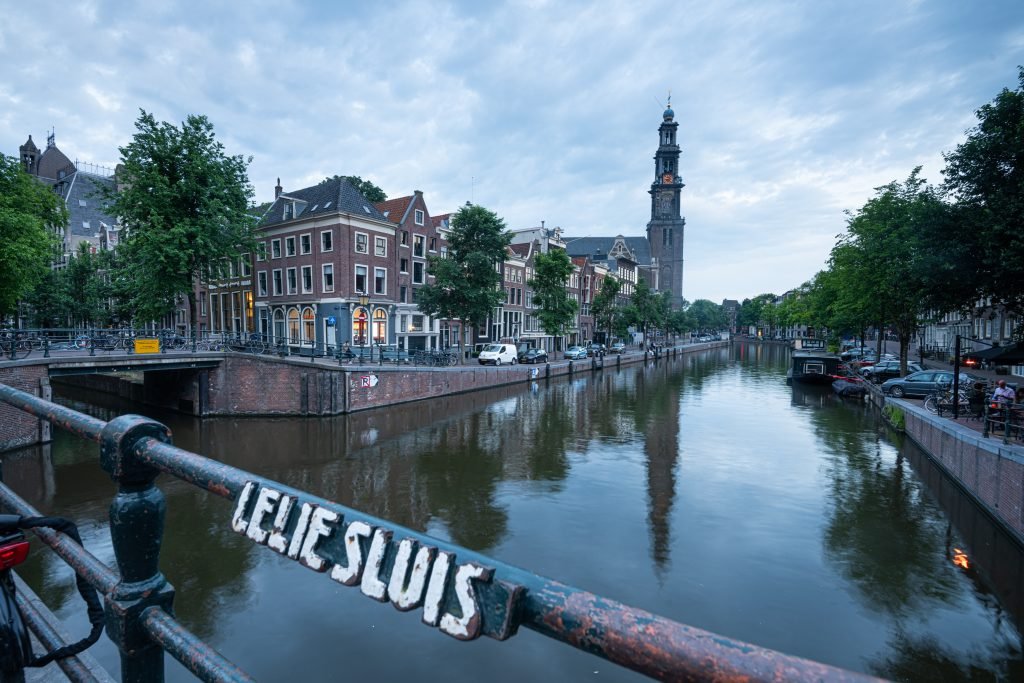
These canals, along with the numerous bridges and historic buildings that line them, contribute to Amsterdam’s distinctive beauty and make it one of the most enchanting cities to explore by foot or by boat.
Amsterdam
9. Reguliersgracht
Reguliersgracht is often referred to as the “Seven Bridges” canal due to its stunning row of seven arched bridges that span across it. This canal is particularly enchanting, especially during the springtime when the trees along its banks are in full bloom.
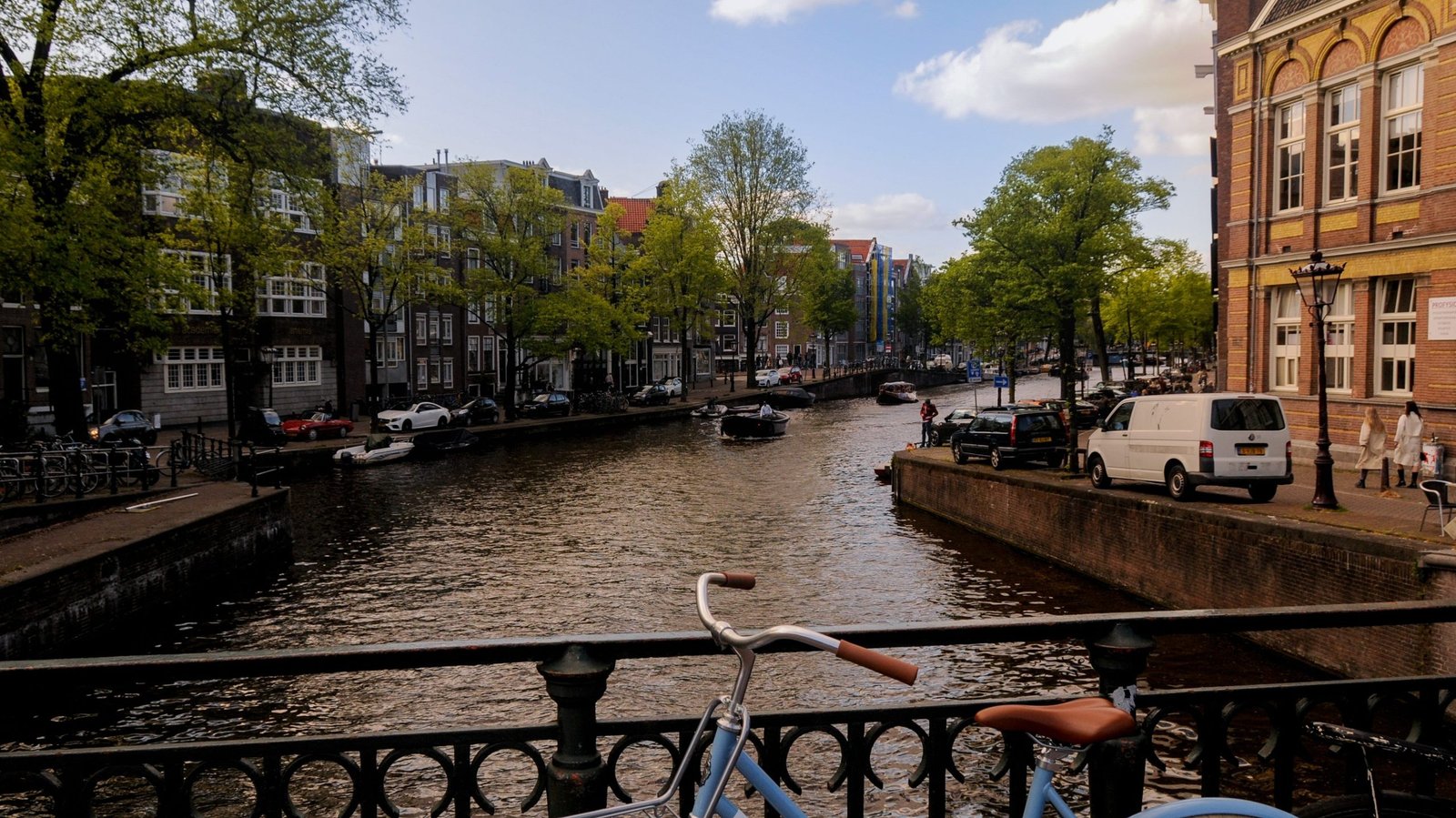
It is a particularly enchanting canal in Amsterdam that captivates visitors with its unique charm and iconic seven bridges. Located in the heart of the city, this canal is a hidden gem that showcases the beauty and elegance of Amsterdam’s canal system.
What sets Reguliersgracht apart is its collection of seven bridges, which are positioned in close proximity to each other, creating a picturesque scene that is often captured in photographs and artworks. These bridges are not only functional but also add a distinct architectural element to the canal. Each bridge has its own character, with delicate arches and intricate detailing that reflect the city’s rich history.
The surrounding buildings along Reguliersgracht are equally impressive, featuring a mix of well-preserved canal houses that exude timeless elegance. These historic houses showcase various architectural styles, ranging from classic Dutch Renaissance to the more ornate and extravagant Rococo. Many of these buildings have been lovingly restored and maintained, preserving their original facades and adding to the canal’s allure.
Reguliersgracht offers a serene and peaceful atmosphere, away from the bustling crowds of the city center. The canal is lined with leafy trees that provide shade during the summer months and create a vibrant burst of colors during the autumn season. Exploring the canal on foot or by boat allows visitors to immerse themselves in the tranquil ambiance, admiring the reflections of the buildings and bridges on the calm water surface.
The best time to experience Reguliersgracht’s beauty is during the golden hour, especially at sunrise or sunset when the warm light bathes the canal, casting a romantic glow over the scene. The reflections in the water, coupled with the picturesque bridges and surrounding architecture, create a magical setting that captures the hearts of those who visit.
Whether you choose to stroll along the banks, enjoy a leisurely boat ride, or simply sit on a bench and take in the view, Reguliersgracht is a must-see canal in Amsterdam. It encapsulates the essence of the city’s canal system, showcasing the harmonious blend of architecture, nature, and history that makes Amsterdam so unique and captivating.
Amsterdam
10. Amstel
The Amstel River flows through Amsterdam, and its banks are adorned with beautiful historic buildings and iconic landmarks such as the Magere Brug (Skinny Bridge). The river offers breathtaking views, and taking a boat ride along the Amstel is a popular way to explore the city.
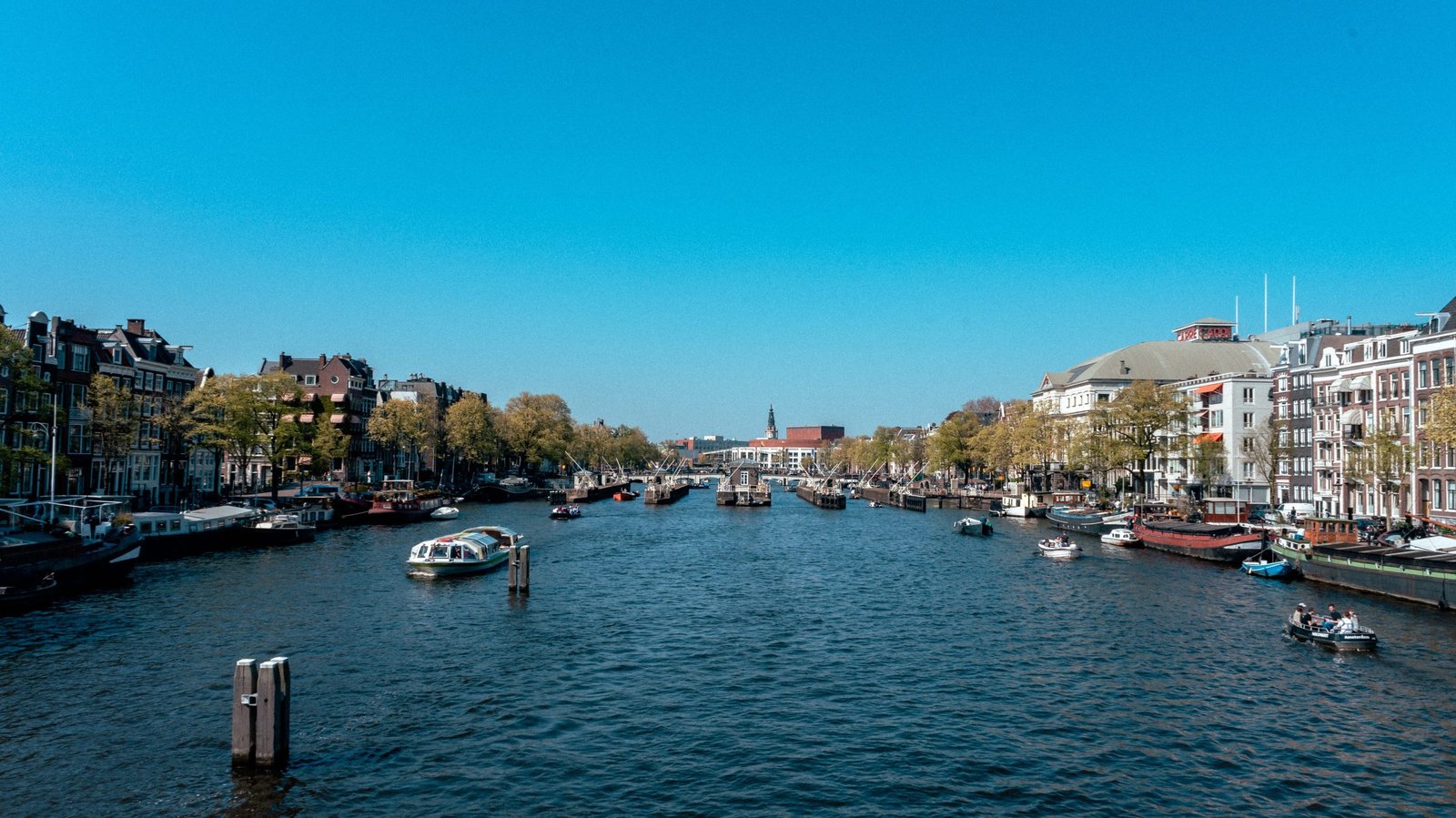
The Amstel River, often referred to as the Amstel Canal, is not technically a man-made canal but a natural river that runs through the city of Amsterdam. However, it is a significant waterway that greatly contributes to the beauty of the city.
The Amstel River has played a vital role in the history and development of Amsterdam. The name of the city itself is derived from “Amstelredamme,” which means “dam on the Amstel.” It was along the banks of the Amstel River that the earliest settlements of Amsterdam were established in the 12th century.
The river stretches for about 31 kilometers, starting from its source in the Amstel village near the city of Uithoorn and flowing through Amsterdam before eventually joining the IJmeer, an inlet of the IJsselmeer. As it meanders through the city, the Amstel River offers stunning views and picturesque landscapes.
One of the most famous landmarks along the Amstel River is the Magere Brug, or Skinny Bridge, which connects the banks of the river at the intersection of the Amstel and Kerkstraat. This iconic white drawbridge is a symbol of Amsterdam and is particularly enchanting when illuminated at night.
Another notable feature along the Amstel River is the Amstel Hotel. This historic luxury hotel, built in 1867, is renowned for its grand architecture and elegant setting along the riverbank. It has been a favorite among celebrities, dignitaries, and artists throughout the years.
The riverbanks of the Amstel are lined with beautiful buildings, including historic houses, elegant mansions, and charming cafes and restaurants. Walking or cycling along the Amstel River provides opportunities to enjoy the scenic views, watch boats pass by, and soak up the atmosphere of Amsterdam.
The Amstel River also hosts various events and festivals throughout the year. One of the most notable is the annual Amsterdam Light Festival, where light artworks and installations illuminate the riverbanks, creating a mesmerizing spectacle.
Exploring the Amstel River is a delightful way to experience the beauty and history of Amsterdam. Whether you take a boat tour, stroll along the riverbanks, or enjoy a meal at one of the waterside establishments, the Amstel Canal offers a unique perspective on the city’s charm and allure.
Feel free to check out Tasty Wineries In Spain
let’s plan your perfect Amsterdam getaway destination at Mmeri Travels Vacations




